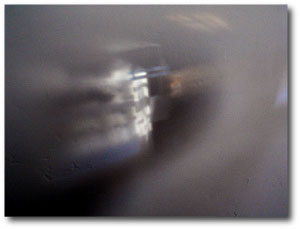
Remember the scene in Blade Runner in which Deckard successively zooms and enhances a digitized photograph found at a crime scene? In 1982, it seemed to epitomize the fashionably sleek high tech, and it left a strong impression on me.
In this post from last February, I wrote about the protostellar disks in Orion that were imaged by the Hubble Space Telescope in the mid-1990s. One of these disks has achieved nearly iconic status (at least among those of us who give talks on planet formation). The following image shows it viewed edge-on and in silhouette against a background of glowing nebular gas. Only a faint smudge of red hints at the central star embedded within the disk.
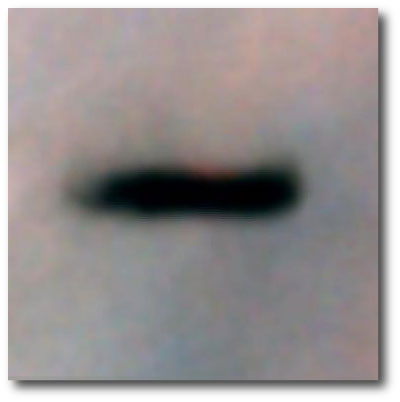
This disk is roughly 17 times larger than the orbit of Neptune. It’s also considerably larger than the orbits of 2003 UB-313 and Sedna, which I’ve integrated and placed on top of the image for comparison.
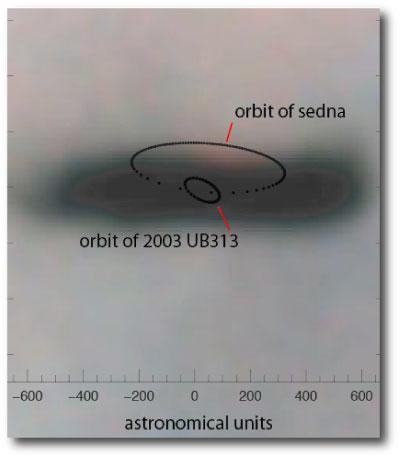
The Hubble press release that accompanies the disk image highlights a number of different protostellar disks, or “proplyds”, many of which are being strongly photoevaporated by radiation from the nearby high-mass stars of the Trapezium cluster. This region is faintly visible to the naked eye as the unresolved middle “star” of Orion’s sword:
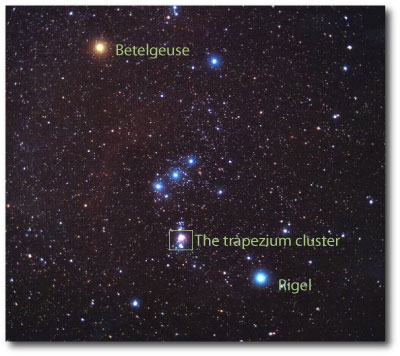
A growing body of evidence suggests that our own solar system may well have formed in a similarly disruptive environment. Analysis of meteorites shows evidence that radioactive atoms with short half-lives (in particular, Aluminum 26) freshly ejected from a nearby supernova in the birth cluster may have been incorporated into our solar system’s protostellar disk. The scattered orbits of bodies such as Sedna also hint that the solar system may have had a close encounter with another star at an early time in its history. Close encounters only occur in a dense stellar environment.
On the Hubble press release page, there is a 22.97 MB Tif image of the entire Trapezium region. When the full image is displayed at laptop-screen resolution, it isn’t clear where the protostellar disks actually are. If, however, you slog through the full download and open the image in a program like Photoshop, then, like Deckard, you can zoom in with successively higher resolution to find the disks shown in the press release. The resolution in the 23 MB Tif image is not the full resolution provided by the actual mosaic of images, but it’s high enough to enable discovery of a lot of detail. A leisurely exploration of the image with pan and the zoom controls gives an amazing sense of the overall structure of the stellar nursery. The three-dimensionality of the cluster is easier to visualize. You can sense that the disk is suspended in empty space, in a slow, arcing free-fall through the cluster, making it somehow easier to grasp that this is an image of new worlds in the process of creation.
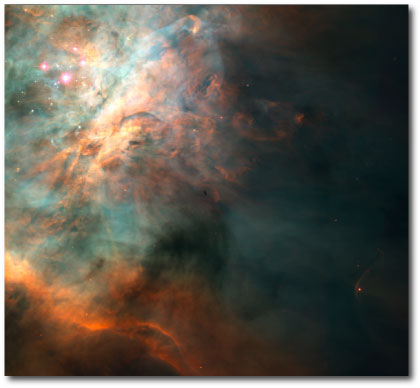
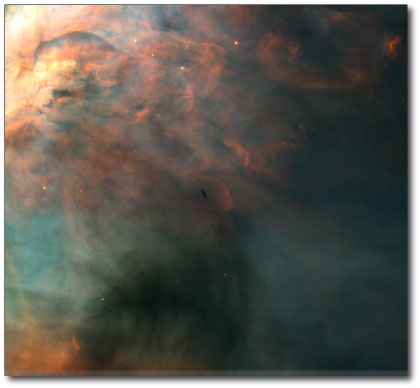
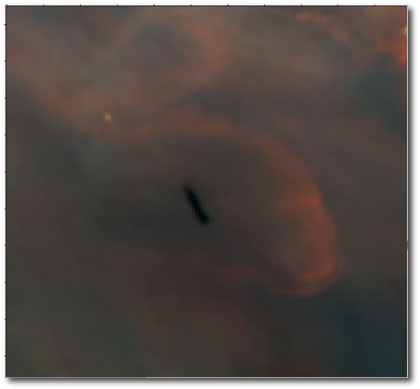

Talking of photoevaporation of discs, what is your view on the formation of super-Earths by ultraviolet irradiation? Would this idea mean that super-Earths could form by gravitational instability?
I don’t think that the super-Earths that are being detected in orbit around red dwarf stars are the result of gravitational instability followed by ultraviolet irradiation, as suggested by Alan Boss in his recent paper.
The “average” star forms in a stellar group of roughly 300 stars, which is not a sufficiently dense environment to provide the UV radiation required to whittle a gas giant down to a super-Earth. For a good overview of this issue, see the recent paper by Adams et al. 2006.
Because the average red dwarf star does not form in a dense enough environment to experience extreme photoevaporation, one would expect to find many more Jupiter-mass planets in orbit around red dwarfs if the primary formation mechanism is disk gravitational instability. This is not what is observed.
A year ago, I thought that the outer two planets orbiting the nearby red dwarf GJ 876 might have formed through disk gravitational instability. I’m less inclined to believe this hypothesis now, however. (1) At the Aspen workshop, Nunos Santos told me that their measurements of the metallicity of GJ 876 indicated that it was quite metal rich. Red dwarf stars are extremely hard to get good metallicity estimates for, and formerly, the star had been believed to be metal poor. (2) Eugenio’s discovery of GJ 876 “d”, which almost certainly contains 7.5 Earth masses of rock and ice, indicates that there was a large amount of solid material in GJ 876’s protoplanetary disk. I think that the GJ 876 system is therefore largely an outcome of the core-accretion process.
I do, though, think that these issues need a lot more investigation.
Hello ! :-D
Greg, do you think that gravitational instability hypothesis may explain the presence of “super-jovian” planets(HD 222582b, 14Herb, 2M1207b etc..) ?
Can the core-accretion model can explain the forming of these super-jovian planets ?
Hi Vincent,
Thanks for the comment… I would agree that the “super-jovian” planets are indeed likely forming via gravitational instability. For an object like 2M1207b (where the primary-to-secondary mass ratio is of order 5 to 1) it’s effectively impossible for the core-accretion process to operate in the standard way. The disk around 2M1207 was likely massive enough and cold enough to easily encounter gravitational instability. For the other objects you mention, the primary-to-secondary mass ratio is considerably larger, but I would nevertheless suspect that in these cases we’re seeing the extreme mass ratio tail of the process that gives rise to brown dwarfs.
It’s been pretty clear for a number of years, now, that a “brown dwarf desert” exists between roughly 10 and 20 Jupiter masses. Of the objects that do fall in this region, some of them are likely forming through the low-mass tail of the gravitational instability mechanism, while other are coming from the high-mass tail of the core-accretion process.
best,
Greg